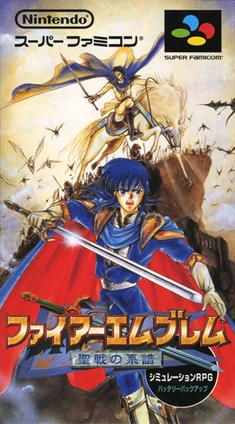 |
| Don't have a horse? Then your pretty much screwed. |
Console: Super Famicom/Super NES
Genre: Turn based strategy
Year Released: 1996
Developer: Intelligent Systems
Publisher: Nintendo
Overlooked or Rare: Overlooked
Fire Emblem is one of my favorite franchises. It’s a strategy series with simple mechanics, but with enough depth and challenge to keep the player engaged. The series is home to 13 (soon to be 14) games, but what’s interesting is that the first six games, as well as the twelfth, never saw a release outside of Japan. Even though half the series is stuck in Japan, it’s still possible to play them thanks to emulators and fan translations. Today’s post is about Genealogy of the Holy War, the fourth game in the series.
Story and Concept
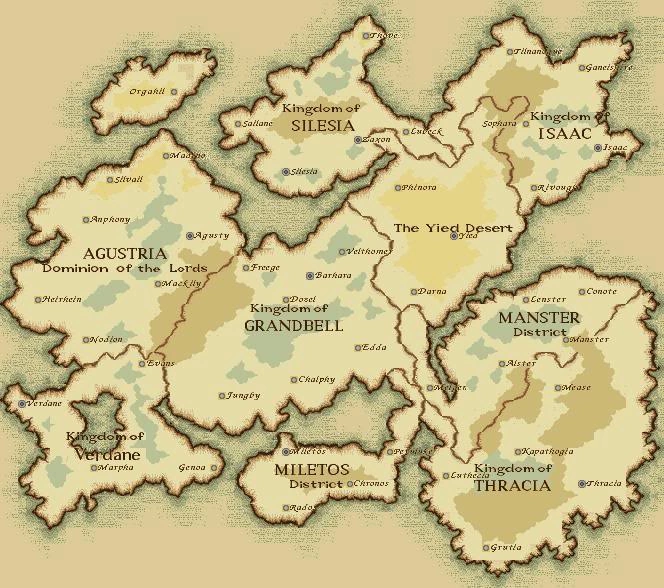 |
| The continent of Jugdral, a land influenced by Norse Mythology. |
Genealogy of the Holy War takes place on the continent of Jugdral. More than a hundred years ago, the evil Lopto Empire was overthrown by the Twelve Crusaders. The Crusaders founded kingdoms across the continent, while the remnants of the Empire sought refuge in the Yield Desert, hoping one day to resurrect the dark god Loptyr and restore their reign. In the year 757, the kingdom of Grannvale launches a military expedition to the nation of Isaach to punish them for their actions in the Desert. Little do the people of Jugdral know that this will lead to the start of a new Holy War…
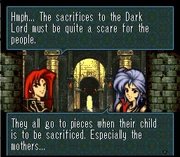 |
| The fan patch offers a decent translation, but it's pretty basic. |
Genealogy of the Holy War has the best story out of any Fire Emblem game. It has some great world building and backstory, and is filled with political intrigue, betrayal, and incest (yes, you read that right). For a Fire Emblem game with support conversations, it handles its characters quite well, even with so little screentime for many of its characters. My one complaint is that it’s way too black and white; the good guys are saints (sometimes literally) and the bad guys are demonic jerks (sometimes literally). Still, it’s Fire Emblem’s best story and, as far as I know, the darkest the games have ever gotten.
Graphics and Design
_%5BEn_by_Dark_Twilkitri_Net_v0.87d%5D_(~Fire_Emblem_-_Genealogy_of_the_Holy_War)-5.jpg) |
| A sample battle animation. |
I can’t really complain about the SNES’s graphics, since I’m too young to truly appreciate the era. However, I have grown fond of the simplicity of Genealogy's graphical design. The character design is simple but effective, which is par for the course for Fire Emblem. Same goes for the battle animations, especially when you change them to map only. Really, I can’t say much bad about Genealogy graphically; simple, yes, but more than adequate.
Sound and Music
Fire Emblem games almost always have great soundtracks, and Genealogy is no exception. It’s music fits each and every situation perfectly. Each piece of music sounds very medieval in instrumentation, and I haven’t found a track I didn’t enjoy listening to. The sound effects in this game are also quite good, giving me a really nostalgic feeling. I really like this game’s sound design, even if the boss music is comparatively unimpressive.
Gameplay
 |
| You control an army of blue guys and wipe out the red guys. Pretty simple. |
Genealogy is much like past Fire Emblem games in terms of its core gameplay. You control an army of units, each with their own class and stats, and you engage in turn based strategy with the enemy. It includes FE’s iconic weapon triangle (swords have an advantage over axes, axes have advantage over lances, and lances have advantage over swords), as well as the ability to promote units when they’ve reached a certain level. However, there are many things that make Genealogy unique from other games in the series.
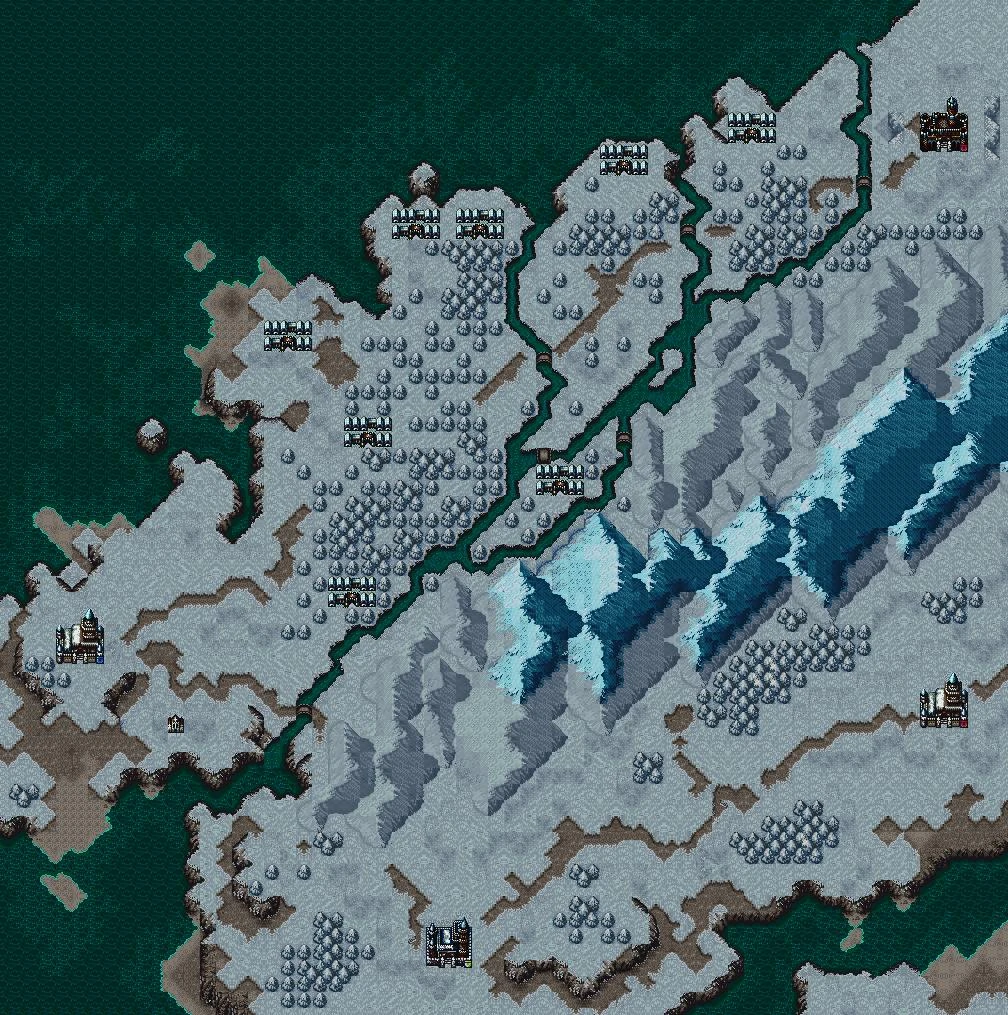 |
| The map of Chapter 4. Note the multiple castles to seize. |
The first major difference is Genealogy’s map design. The game features maps much larger than the Fire Emblem norm, and rather than have a single objective, each map has multiple. This makes the maps in Genealogy feel more like full campaigns and not just battles. I appreciate the idea, but there are some downsides to this aspect of the game. For one, the sheer size of the map means that low movement units have difficulty keeping up with any mounted unit, which is a serious problem in a game that puts so much emphasis on speedy advances. Another is that the maps themselves lack variety in the landscape, and are often too open. The map design is not Awakening-level barren, but I still feel it could have been much better.
 |
| How you pair up the first generation of units is crucial for the second half of the game. |
Another major part of the game is the marriage mechanic. If two units of the opposite sex spend enough time next to each other, they will eventually fall in love. Starting in Chapter 6, the pairings you made with the first set of units will determine the abilities and stats of the children characters. I actually really like the children system, as it rewards intelligent players for making wise pairings with powerful children units. It also encourages experimentation to see which pairings work and which don’t. It does bring up a huge problem with the game, but we’ll get to that later.
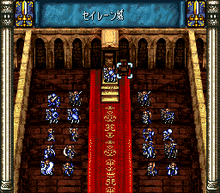 |
| A shot of the Home Castle. |
There are other elements in Genealogy worth noting. One is the home castle, from which you can deploy units, promote units, buy items, and fight in the arena for experience and gold. Each unit has their own supply of gold, which they increase by winning arena battles and visiting villages. Each unit has access to abilities that aid them in battle. For example, the Critical skill can unleash a strike with double damage depending on the unit’s skill stat. All these add layers of strategy to the game, and I like each one of them.
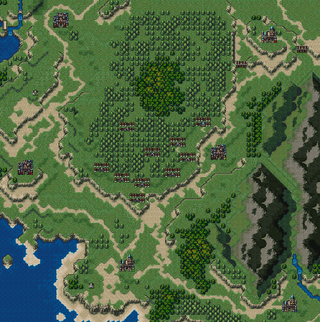 |
| That little peninsula in the southwest corner gives the player one of the best items in the game, but only if a certain unit stands on it. |
However, the game is not without its faults. The biggest would be the beginner unfriendly this game is. Without consulting a guide, this game can be incredibly difficult, if not nearly impossible. For instance, there are several hidden conversations and events that can only be triggered in certain circumstances. These usually net the player stat boosts or powerful items, but without a guide, new players can easily miss out on these items. Heck, some items are only obtainable by having a specific unit standing in a specific tile. And don’t even get me started with the amount of research needed to find decent pairing. Out of all the Fire Emblem games I’ve played, this is the only one where a guide is practically needed.
That being said, the game does offer a fair challenge if you know what you’re doing. The RNG, while more brutal than more modern Fire Emblem titles, is still fair. The game does a great job of reward smart moves and punishes any player that leaves an opening. I especially appreciate how the enemy AI gradually gets more brutal and cunning as the game progresses, instead of having brain dead enemy units that rush into your sword at all times. Even with the high barrier of entry, Genealogy is a fair challenge for any strategy enthusiast.
I have a few nitpicks, like the lack of a trade mechanic, or the near uselessness of several characters in a game where every unit counts, but those aren’t big enough hindrances to prevent an enjoyable experience.
Final Words
Genealogy is a hard game, make no mistake, but it’s also a great experience. It presents a fair challenge, an intriguing story, and great music. For any dedicated Fire Emblem fan or strategy enthusiast, this is definitely worth a download. Just be warned: going in blind is not recommended.

No comments:
Post a Comment